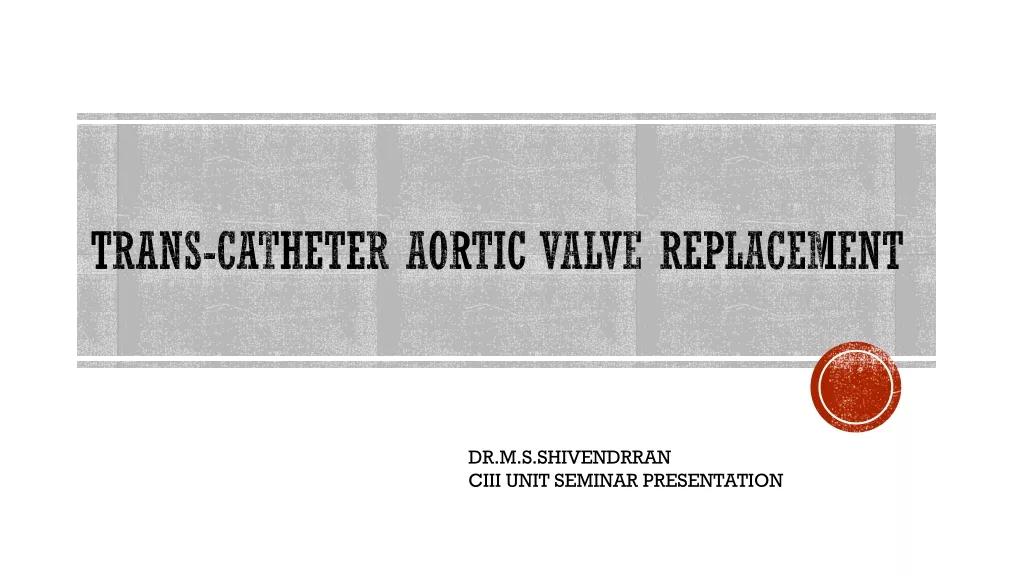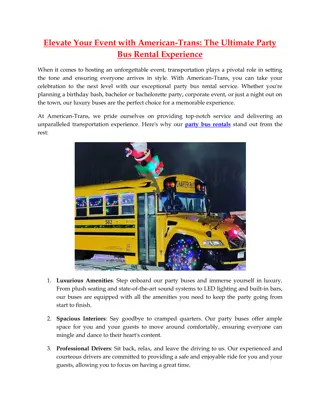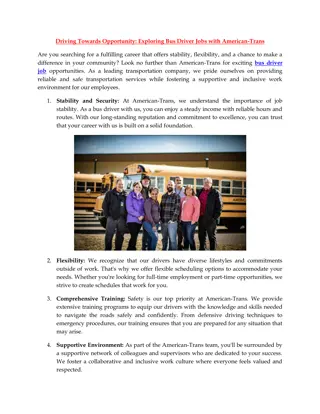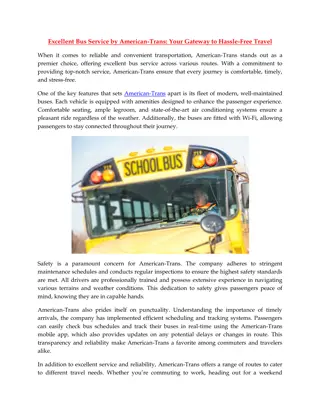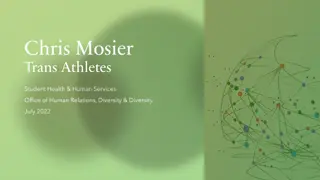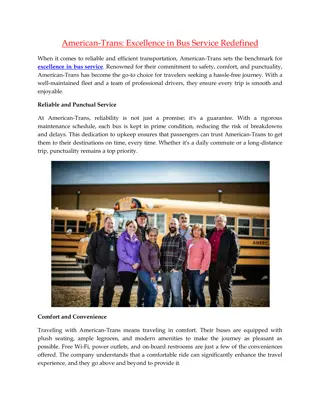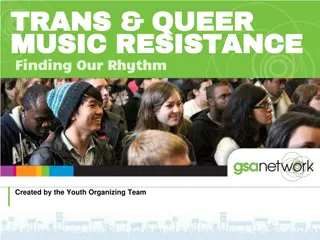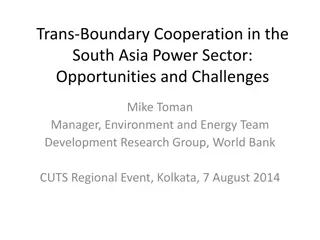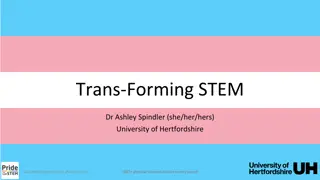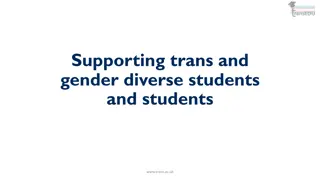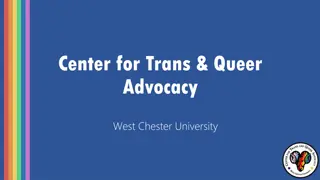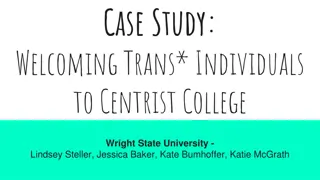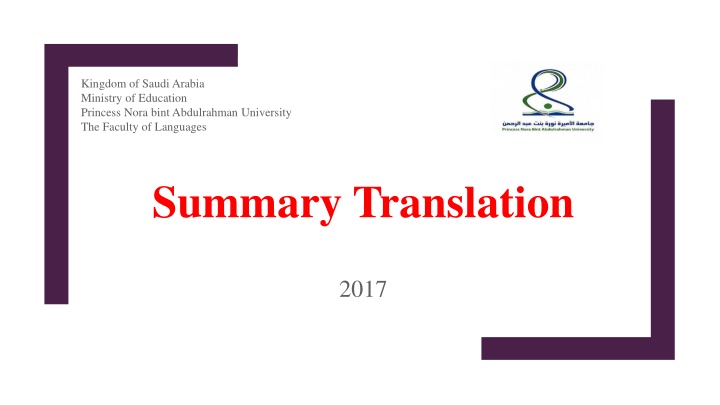
Effective Summary Translation Characteristics and Process
Learn about the definition, characteristics, and process of summary translation, including its importance, challenges, and assessment. Understand how to produce a good summary and when a summary translation is needed.
Download Presentation

Please find below an Image/Link to download the presentation.
The content on the website is provided AS IS for your information and personal use only. It may not be sold, licensed, or shared on other websites without obtaining consent from the author. If you encounter any issues during the download, it is possible that the publisher has removed the file from their server.
You are allowed to download the files provided on this website for personal or commercial use, subject to the condition that they are used lawfully. All files are the property of their respective owners.
The content on the website is provided AS IS for your information and personal use only. It may not be sold, licensed, or shared on other websites without obtaining consent from the author.
E N D
Presentation Transcript
Kingdom of Saudi Arabia Ministry of Education Princess Nora bint Abdulrahman University The Faculty of Languages Summary Translation 2017
The Outline: Definition of Summary Translation Characteristics of Summary Translation Characteristics of a Good Summary The Process of Producing a Summary Translation How to Write a Good Summary Examples of Good Summary Why and When is a Summary Translation Needed? How Long a Summary Translation is? Challenges in Summary Translation Assessment of Summary Translation
1. Definition of Summary Translation: Summary translation is a condensed or shortened version of a ST content. It provides a gist or a synopsis of the ST. It presents only the main or key points. It leaves out the details and supporting ideas. It is often in response to an information request. It helps the reader to have an overview of the ST content and conclusions.
1. Definition of Summary Translation: A summary could be generic (general) or targeted (written in response to certain needs). Customers could be looking for information about a specific topic or answers to specific questions, rather than attempting to summarize all of the main points of ST.
1. Definition of Summary Translation: Summary Translation has other names such as: Gist translation and gisting Pr cis translation Extractive translation.
2. Characteristics of Summary Translation: It s an intellectual process that involves various skills: reading, analysis, evaluation, information reduction, reformulation of ideas, summarizing, writing, translating. It s not a word-for word translation. It presents only the key points of the whole text or only a part of it, depending on the translation brief. It s cost- and time-effective. It s always much shorter than the original.
2. Characteristics of Summary Translation: However, different organizations and employers have different expectations and requirements from translators. Therefore, if you ever undertake a summary translation task, make sure that you have a clear idea about the expectations of whoever requests the translation. Ask for a written list of instructions or requirements in terms of: (style, length, degree of details, level of complexity, deadline for submission, what to focus on, etc.)
3. Characteristics of a Good Summary: Accurate and faithful to the ST Short and concise Free from repeated ideas and minor details Coherent and cohesive Unplagiarized
3. Characteristics of a Good Summary: Gives a clear idea of the ST. Objective Begin with the main idea of the original text Balanced in terms of paragraph length
3. Characteristics of a Good Summary: To minimize subjectivity in evaluating summary translation, ask specific questions: What are the key words that should be there in the summary? What cohesive devices did the author use to connect his sentences and make the paragraph coherent? What are the major parts of the text about? Give an example of an irrelevant information based on the translation brief. Give an example of a relevant, but minor, piece of information that should not be included in the summary.
4. The Process of Producing a Summary Translation: reading and exploring comprehending and analyzing identifying main and subordinate ideas extracting main ideas only ST reformulating the summary Summary translating the summary TT
5. How to Write a Good Summary: Read the text and try to identify the main and subordinate points. Use any technique that can help you separate the main points from subordinate ones. Find key words; make a list of gist words, try to find synonyms for these words to help you write the summary in your own words. Start the summary by writing the writer s name, the text title, and a sentence telling what the whole text is all about.
5. How to Write a Good Summary: Give a statement about the purpose of the text (why is this text written). Find the thesis statement (what the author is saying about the topic, and it could be in the introduction or in the conclusion. Do the same with each paragraph: find the thesis statement, and the key supporting points. Eliminate the minor details (examples, rhetorical questions, ). Eliminate any repetitions, lists, examples and detailed descriptions
5. How to Write a Good Summary: Make sure the ideas are logically connected (cohesion and coherence, relationships between sentences) Do not include your opinion. Revise your summary. Translate your summary Revise your translation.
Before writing the summary: 1. For a text, read, mark, and annotate the original. Highlight the topic sentence. Highlight key points/key words/ phrases. Highlight the concluding sentence. Outline each paragraph in the margin. Prepared by: Ms. Nuha Al-Hejji
Before writing the summary: 2. Take notes on the following: The source (author-first/last name, title, date of publication, volume number, place of publication, publisher, URL, etc.). The main idea of the original (paraphrased). The major supporting points (in outline form). Major supporting explanations (e.g. reasons/causes or effects). Prepared by: Ms. Nuha Al-Hejji
Writing your summary: 1. Organize your notes into an outline which includes main ideas and supporting points but no examples or details (dates, numbers, statistics). 2. Write an introductory paragraph that begins with a frame, including an in-text citation of the source andthe author as well as a reporting verb to introduce the main idea. Prepared by: Ms. Nuha Al-Hejji
Writing your summary: o The frame: In his /her article "_____________________,"______________(year) (title, first letter capitalized) author's last name argues/claims/reports/contends/maintains/states that_______________________________________ (main idea argument; S +V+ C) Prepared by: Ms. Nuha Al-Hejji
Writing your summary: o Example: In his article "Michael Dell turns the Pc world inside out," Andrew E. Serwer (1997) describes how Michael Dell founded Dell Computers and claims that Dell's low-cost, direct-sales strategy and high quality standards account for Dell's enormous success. Prepared by: Ms. Nuha Al-Hejji
Writing your summary: o Reporting Verbs: Strong Argument Neutral Counterargument Suggestion Criticism Argue State Argue against Suggest Criticize Claim Report Reject Recommend Contend Explain Maintain Discuss Insist Illustrate Posit Observe Prepared by: Ms. Nuha Al-Hejji
Writing your summary: o Other examples of frames: author's last name According to "_____________________, (year) _________________________________________. (main idea; S + V+ C) ______________ s article on _____________ (year) discusses the ______________________ (main idea; Noun Phrase) topic author's last name ___________________, in his/her article, ___________ argues that__________________ title of article author's last name, year (main idea; S + V+ C) Prepared by: Ms. Nuha Al-Hejji
Writing your summary: 3. The main idea or argument needs to be included in this first sentence. Then mention the major aspects/factors/reasons that are discussed in the article. Give a full reference for this citation at the end of the summary. Prepared by: Ms. Nuha Al-Hejji
Writing your summary: 4. Support your topic sentence with the necessary reasons or arguments raised by the author but omit all references to details, such as dates or statistics. 5. Use discourse markers that reflect the organization and controlling idea of the original, for example cause-effect, comparison-contrast, classification, process, chronological order, persuasive argument, etc. Prepared by: Ms. Nuha Al-Hejji
Writing your summary: 6. In a longer summary, remind your reader that you are paraphrasing by using "reminder phrases," such as: The author goes on to say that The article (author) further states that (Author's last name) also states/maintains/argues that (Author's last name) also believes that (Author's last name) concludes that Prepared by: Ms. Nuha Al-Hejji
Writing your summary: 7. Restate the article's conclusion in one sentence. 8. Give a full reference for the citation. Prepared by: Ms. Nuha Al-Hejji
Sample Summary Paragraph: In "My Favorite Shoe," Treyvon Jones explains that Nike shoes are the best brand of running shoe for serious track athletes. Jones supports this view by pointing out that Nike shoes are more comfortable, last longer, and provide more cushioning for the feet. He notes that the statistics from sales and scientific evidence of how Nike shoes are better for the feet supports his claim. In addition, Jones points out that most professional runners use Nike and he tells his own story of how he won the 100 meter men's competition after switching to Nike shoes. Prepared by: Ms. Nuha Al-Hejji
Paraphrasing: Describing information that you have read or heard using your own words. When a text has been well paraphrased, all of the details in the original text should be retained and should have the same meaning. Prepared by: Ms. Nuha Al-Hejji
6. Why and When is a Summary Translation Needed? When a full translation is not needed When it is cost effective When the turnaround time is very tight To find out if a full translation is needed To determine whether ST has useful information To have a rough idea about the content of a document Summaries are also important in academic research, in conferences and symposia
7. How Long a Summary Translation is? This depends on the purpose of the translation and the requirementsor instructions (the translation brief) given by whoever requested the summary translation. Generally, a summary can be as short as a few sentences or longer, depending on the complexity of the text and the level of detail you are required to provide.
8. Challenges in Summary Translation: When a text has a high density of information When a text is highly technical When a text is inference based When a text has intentional deception When the meaning is beyond the literal
9. Assessment of Summary Translation: Assessment should focus on the two main skill involved in summary translation: summarizing and translating the summary.
Some useful links: Some useful links: https://www.youtube.com/watch?v=eGWO1ldEhtQ https://www.youtube.com/watch?v=-zgKOguRrRs https://www.youtube.com/watch?v=d3_tH506HxU https://www.youtube.com/watch?v=0C10VDEoChg

